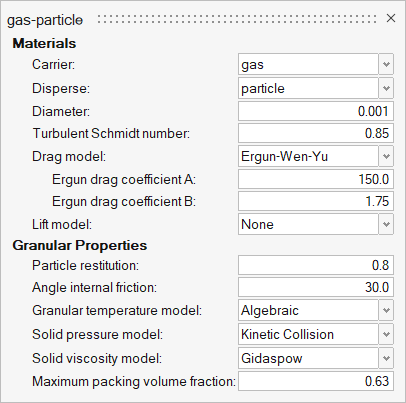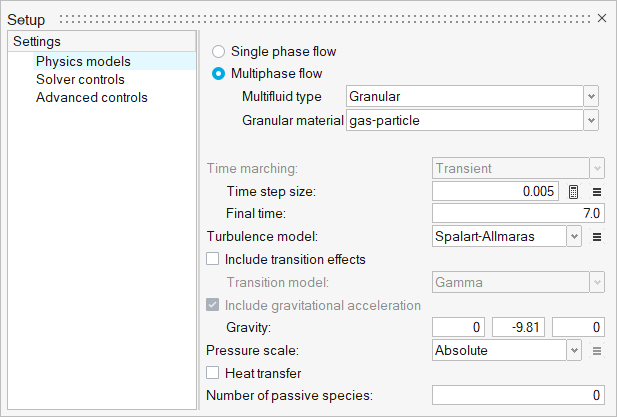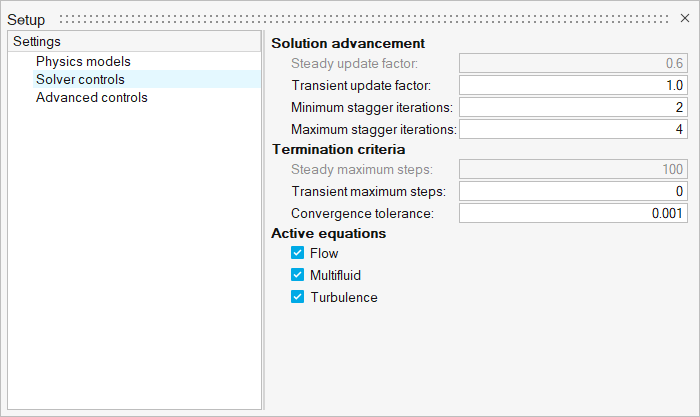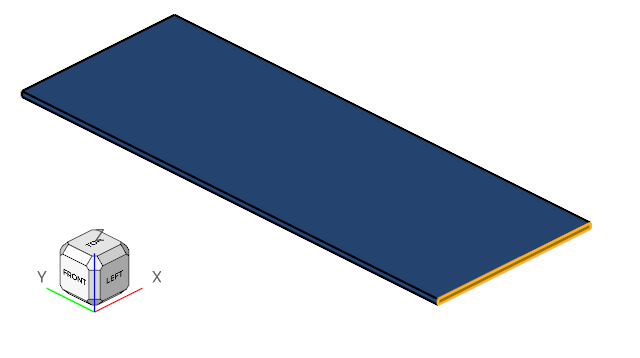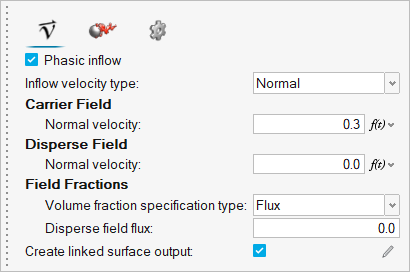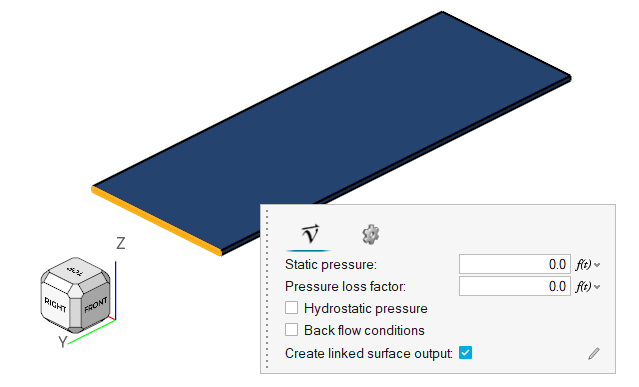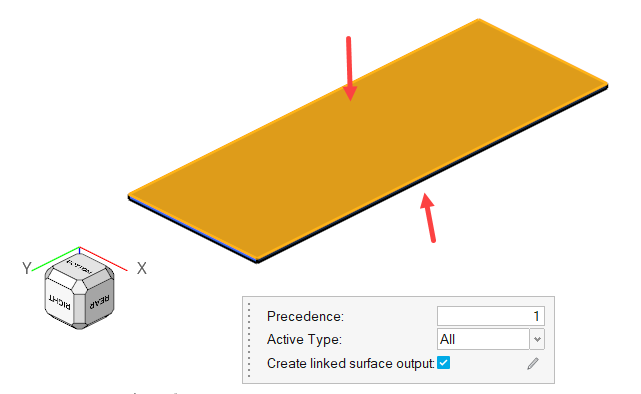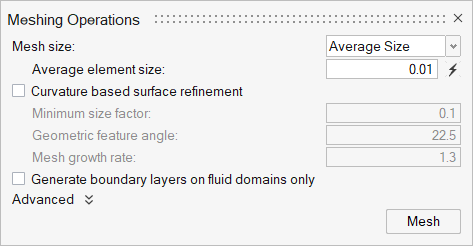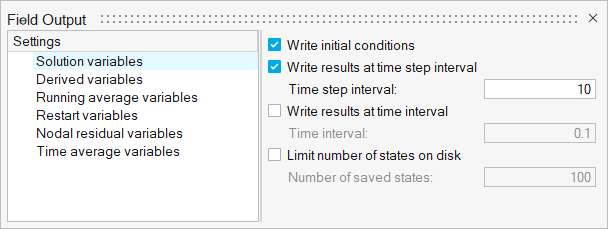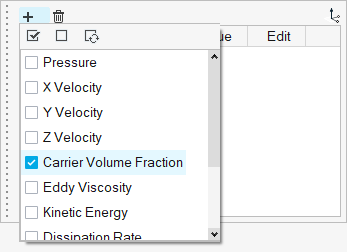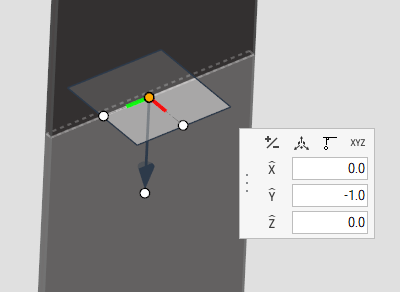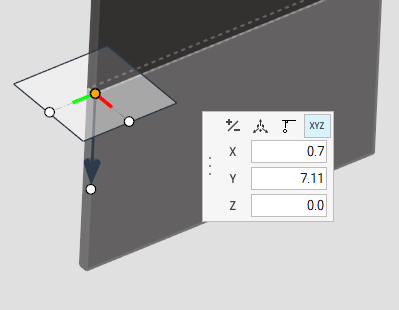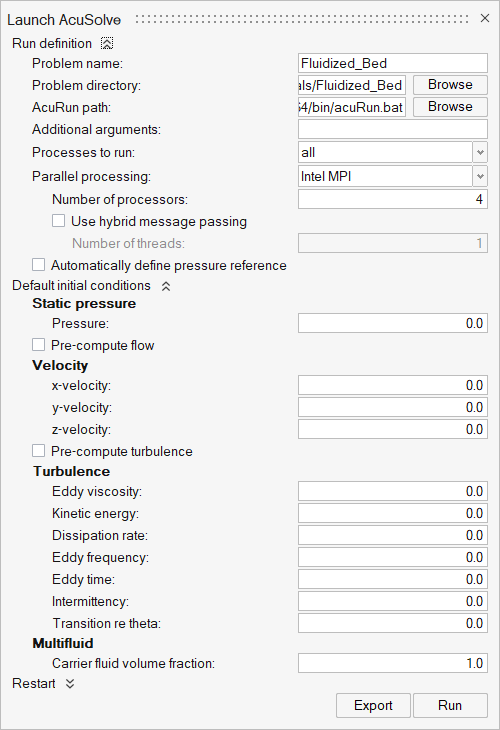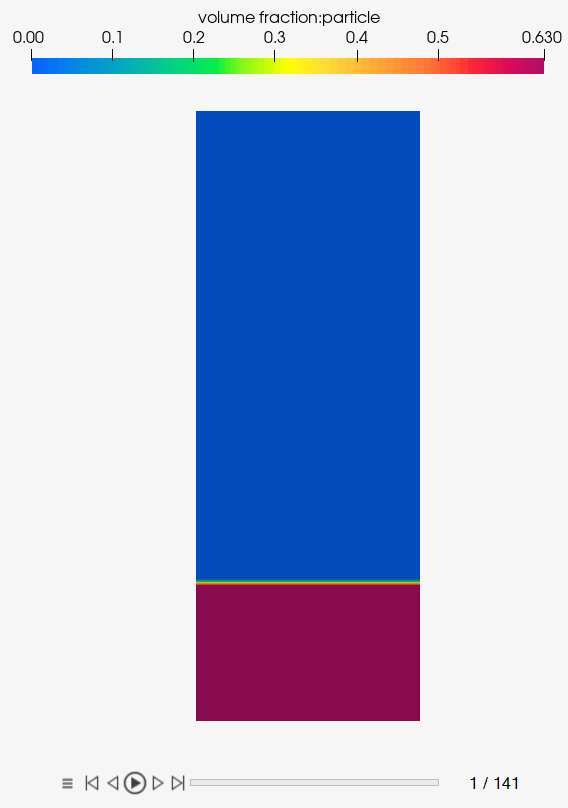ACU-T: 4102 Fluidized Bed using the Granular Multiphase Model
Prerequisites
This tutorial provides the instructions for setting up and running a gas-solid fluidized bed simulation using the granular multiphase model. Prior to starting this tutorial, you should have already run through the introductory tutorial, ACU-T: 1000 Basic Flow Set Up, and have a basic understanding of HyperWorks CFD and AcuSolve. To run this simulation, you will need access to a licensed version of HyperWorks CFD and AcuSolve.
Prior to running through this tutorial, click here to download the tutorial models. Extract ACU-T4102_FluidizedBed.hm from HyperWorksCFD_tutorial_inputs.zip.
Problem Description

Figure 1.
| Phase | Density (kg/m3) | Viscosity (Pa s) |
|---|---|---|
| Gas | 21.56 | 1.781e-05 |
| Particle | 910 | - |
Start HyperWorks CFD and Open the HyperMesh Database
Validate the Geometry
The Validate tool scans through the entire model, performs checks on the surfaces and solids, and flags any defects in the geometry, such as free edges, closed shells, intersections, duplicates, and slivers.

Figure 3.
Set Up Flow
Set the General Simulation Parameters
Assign Material Properties
Define Flow Boundary Conditions
Generate the Mesh
Define Nodal Outputs
Define the Nodal Initial Conditions
Run AcuSolve
Post-Process the Results with HW-CFD Post
Summary
In this tutorial, you learned how to set up and solve a fluidized bed simulation using the Granular multiphase model available in AcuSolve using HyperWorks CFD. You started by importing the HyperWorks CFD input database and then defined the flow setup. Once the solution was computed, you created a contour plot of particle volume fraction using HyperWorks CFD Post.


